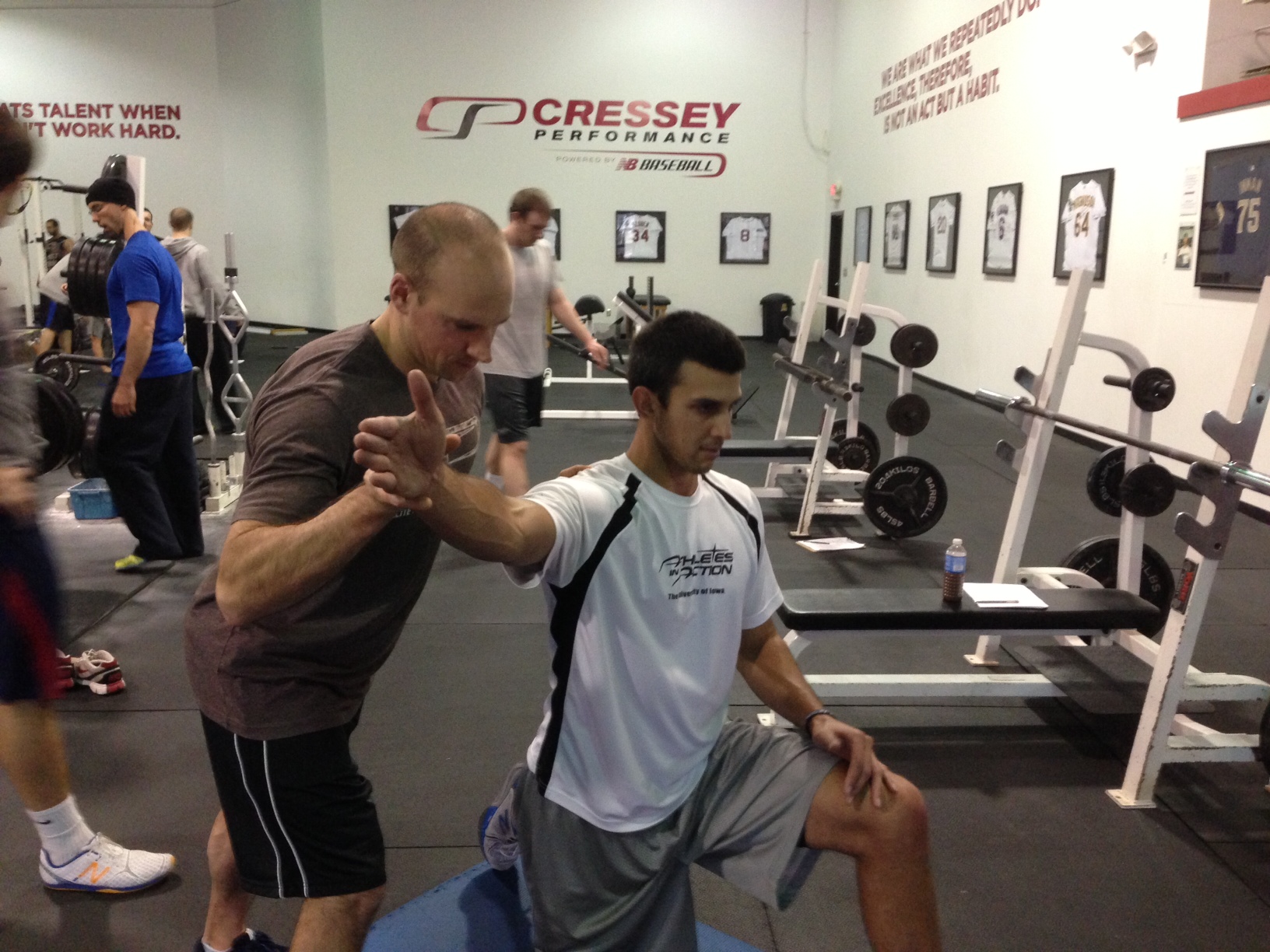A Quick Lesson on Long-Term Athletic Development
Written on June 27, 2014 at 1:59 am, by Eric Cressey
On Wednesday night, the Vanderbilt Baseball team won the first men's national championship in any sport in school history. I'm absolutely ecstatic, as we've trained several current Vanderbilt players as well as some of their former players who are now in professional baseball, and I have a great relationship with the coaching staff.
To make the moment even more special, a long time Cressey Performance athlete, Adam Ravenelle, came on to get a six-out save in the deciding game three:
While Vanderbilt baseball's 2014 season is a amazing story in itself, there's a sub-plot that warrants mention as well, and Adam serves as a perfect example. "Rav" was a 5-10, 125-pound 8th grader when he first timidly walked in to Cressey Performance back in the summer of 2007. At the time, he was a baseball player - but also a golfer, tennis player, and basketball player.
As a freshman and sophomore in high school, he played golf, basketball, and baseball. As a junior, he pared it down to basketball and baseball. Only when he was a high school senior did he trim things down to one sport - and even then, it was after he was already committed to play at Vanderbilt, and a serious MLB Draft prospect (he was drafted in the 44th round out of high school in 2011, and then again in the 4th round this year).
His teammate, Tyler Beede, is another one of our athletes. Ty played football, basketball, and baseball as a freshman. He went to football and baseball as a sophomore, then down to baseball only as a junior. He regretted leaving football, and went back to playing his senior year - and was still a 1st round draft pick in 2011 (and again this year).
I vividly remember a conversation I had with Vanderbilt coach Tim Corbin in the winter of 2009-2010 when he talked about how he's always reluctant to recruit baseball-only guys. There are so many incredible benefits to playing multiple sports, from avoiding overuse, to developing general athleticism, to making friends in different social circles. If you look at the roster that just won a College World Series for Vanderbilt, you'll see that recruiting perspective is readily apparent. Look at their roster, and only 9 of the 34 guys come from states that could be perceived as "year-round baseball" states: Georgia, Florida, Texas, California, etc. There are a heck of a lot more guys from Massachusetts, Ohio, Indiana, Illinois, New York, New Jersey, Kentucky and (of course) Tennessee - all states where it gets cold and snows in the winter, making year-round baseball a lot tougher. Most of the guys on the Vanderbilt roster were great athletes in other sports as well. In fact, of the 9 to which I alluded above, two - Carson Fullmer (FL) and Dansby Swanson (GA) - were praised by the ESPN announcers for their success in other sports (karate and basketball, respectively).
Early specialization might work out for a small percentage of young athletes, but it fails miserably for the majority. And, you can never go wrong with finding and developing general athleticism. Look at Vanderbilt's track record of success over the past decade (and their significantly lower injury rates), and it's impossible to argue. Let kids play, and not just baseball...they might just "surprise" you by winning a national championship.
Congratulations to the Commodores!

Sign-up Today for our FREE Baseball Newsletter and Receive Instant Access to a 47-minute Presentation from Eric Cressey on Individualizing the Management of Overhead Athletes!
|













June 27th, 2014 at 5:49 am
Rufus has been writing some good stuff on this. The larger the base the taller you can build at the peak. http://cgweightlifting.wordpress.com/2013/11/15/long-term-athletic-development-2/
June 27th, 2014 at 7:40 am
Thank you for the terrific article on specialization. I have a young 11 year old son, who plays multiple sports however he would like to try pitching b/c baseball is his first love. How would you recommend he begin that process as it relates to grip, and basic delivery mechanics? Thank you, Drew Kelton
June 27th, 2014 at 2:28 pm
Awesome stuff as always Eric. A message that needs to be heard… sending this out to my guys. Congrats to your players and keep up the great work.
June 27th, 2014 at 3:33 pm
Eric-
Great post reiteratig the importance and value of multi-sport participation. Could also look at the San Antonio Spurs, NBA champs, bunch of kids from places other than America who grew up playing multiple sports, the MVP Leonard was an elite strong safety in football before he outgrew the position and focused on basketball.
June 28th, 2014 at 12:24 pm
One of the things mentioned several times during the broadcasts was that Virginia’s coach actively recruits multi-sport athletes. As far as the series went, being a UVA guy I’d have like to have seen a best of 7.
June 29th, 2014 at 1:22 pm
Hi Kelly,
Even more fuel for the fire to have two teams with heavy Northern presences in the national championship game!
June 29th, 2014 at 5:14 pm
great article! Another testament to the long term athletic development theory to developing athletes and the cultural emphasis, not scientific, on sport specialization.
June 30th, 2014 at 4:15 am
Drew,
I’d set up a session or two for him with a local pitching coach. Just learning grip and basic delivery cues can go a long way.
July 1st, 2014 at 1:27 pm
Great stuff Eric. I used to believe specialization was needed until recently. Possibly due to the 10,000 hour rule. 10,000 hours may still be needed but it may not all be needed in one sport.